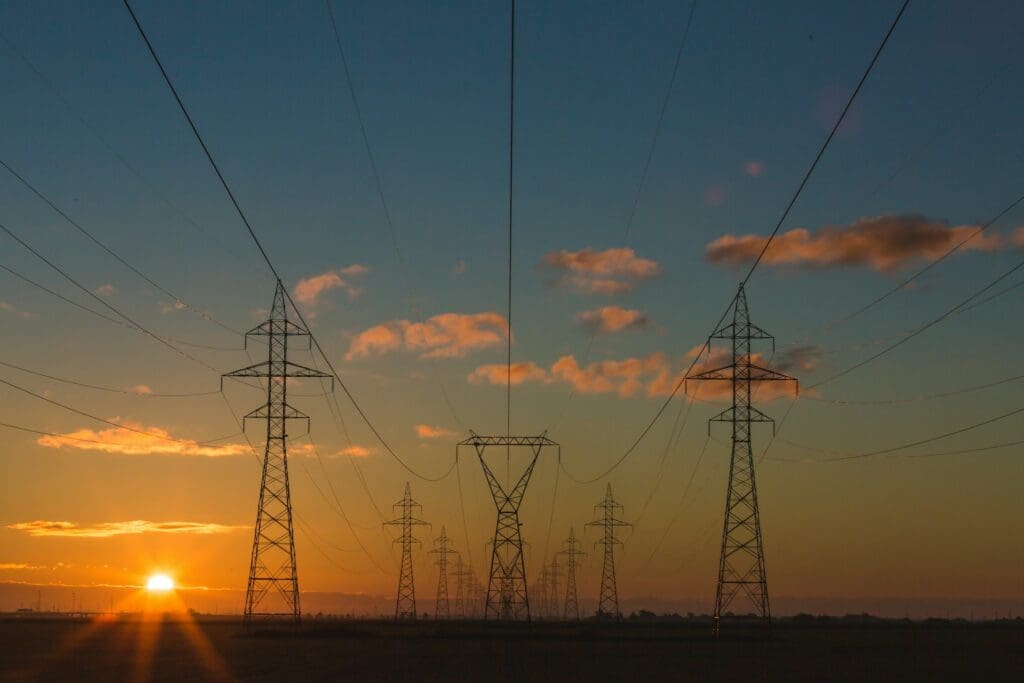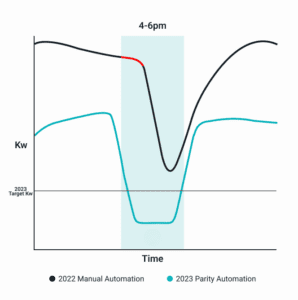
With the growing focus on the electric grid and the need to reduce CO2 emissions, demand response programs present an excellent opportunity for property and resident managers.
Demand response (DR) is a strategy employed by utility companies to manage electricity consumption during peak demand periods. These typically coincide with the warmest days of summer, when the electric grid is the most vulnerable, and its emissions are usually the highest.
DR involves reducing energy demand in real-time or on a pre-determined, typically 2-4 hour window. This is called a demand response event (DR event).
Buildings that participate in demand response programs will reduce their electricity demand, reduce strain on the grid, and receive financial incentives from utility companies.
Buildings get paid per kW reduction during scheduled or sometimes unscheduled demand response events. For example, there are usually between 4 to 8 demand response events a year in a typical season in New York’s ConEd demand response program. This is a great opportunity for buildings to earn additional revenue.
Parity can automate demand response curtailment to maximize revenue and reduce the impact of the temporary energy reduction for occupants during a DR event.
Parity automates demand response protocols to run during demand response events.
We can do this because we remotely control a building’s HVAC systems. We have a deep understanding of the building’s real-time heating and cooling demand, so we’re able to automate their system with a unique level of precision.
For example, we can automate ventilation equipment for a demand response event. It’s normally not feasible for maintenance staff to scramble up to the roof to manually do this for every DR event.
By working with the resident manager to pre-program the level of curtailment they are comfortable with, Parity can automatically “switch” the building into demand response mode when the notification of an event is received from the demand response aggregator.
This allows Parity to maximize revenue for the building while reducing any impact occupants might face from the temporary reduction in energy usage. Plus, this prevents possible mistakes or underperformance by eliminating manual actions from Resident Managers or superintendents.

2023 Parity DR Example
The above graph shows Parity lowering the overall energy demand measured in kWs. Here are 3 points about the graph worth mentioning:
Starting on Time:
Resident managers and their staff may not be available immediately at the start of the DR event. This is compounded by DR events occurring on the hottest days of the year when they are already swamped.
In the graph, the 2022 line shows the building started curtailment almost a third of the way through the event. With our automation, we begin curtailment slightly before the event to maximize revenue. We can also set up automated pre-cooling.
Depth of Curtailment:
It’s difficult to know how far you can take curtailment without affecting residents’ comfort. Since Parity gains a deep understanding of HVAC system operations at each building, we can develop customized curtailment programming. This can include pre-cooling, a process where cooling is run at nearly full capacity for around 2 hours before the event, which is another benefit of our automation. If we pre-cool, we can avoid tenant issues. This is particularly important for longer events (4+ hours).
Return To Baseline:
In 2022, it took far longer for the building staff to return the systems to their previous setpoints, which could potentially impact resident comfort without generating any DR revenue for the building.
With our automation, the system returns to its baseline within minutes of the event ending. You can also see how, at the end of the event in 2023, our automation didn’t increase kWh as much.
For buildings with centralized HVAC, joining a demand response program is easier than ever.
Most participation begins with enrollment through a utility or third-party aggregator. Once enrolled, buildings receive notifications ahead of peak demand events, typically with a few hours’ notice.
The challenge isn’t signing up. Rather it’s responding in a way that’s fast, consistent, and minimally disruptive. Reducing load at the right time without affecting comfort or burdening staff requires automation.
That’s where platforms like Parity come in. By integrating with a building’s HVAC controls, Parity enables curtailment to happen automatically. The system pre-cools in advance, adjusts during the event, and returns to normal without creating a rebound. Everything is configured to match the building’s equipment and comfort preferences.
What was once a manual, unpredictable process is now programmable. In many cases, the biggest question isn’t whether a building can support the grid; it’s whether the building has the right technology in place to make a meaningful contribution.
Demand response will reduce your building’s energy consumption, earn additional revenue, and help stabilize the grid. With Parity, building staff can kick back and relax while we automate demand response protocols to maximize revenue and ensure occupant comfort.
We hosted a recent webinar with Logical Buildings, sharing how we help AvalonBay Communities automate their energy management, support Local Law compliance, and earn maximum demand response revenue.
Are you ready to learn more about how Parity automates demand response curtailment? Email contact@paritygo.com and tell us that you’re interested in automating demand response for your building.